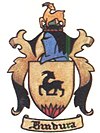Bindura
| Bindura | ||
|---|---|---|
| Town | ||
|
||
| Nickname(s): Binzburg | ||
| Coordinates: 17°18′S 31°20′E / 17.300°S 31.333°ECoordinates: 17°18′S 31°20′E / 17.300°S 31.333°E | ||
| Country | Zimbabwe | |
| Province | Mashonaland Central | |
| District | Bindura District | |
| Established | 1901 | |
| Elevation | 1,070 m (3,510 ft) | |
| Population (2012) | ||
| • Total | 46,275 | |
| Time zone | CAT (UTC+2) | |
| • Summer (DST) | CEST (UTC+1) | |
| Climate | Cwa | |
Bindura is a town in the province of Mashonaland Central, Zimbabwe. It is located in the Mazowe Valley about 88 km north-east of Harare. According to the 1982 Population Census, the village had a population of 18,243. This rose to 21,167 in the 1992 census and in the 2012 census it had reached 46,275. It is the administrative capital of the province. Bindura Nickel, a subsidiary of Mwana Africa plc, mines nickel, copper and cobalt in the area and operates a smelter refinery just south of the village. Cotton and maize is grown intensely in the region. The first basic school in Bindura opened in 1912. Bindura is found in the north of Zimbabwe and chief Masembura and Chief Musana is near Bindura town.
The perennial Mazowe River runs around Bindura and through the north-eastern perimeter.
Bindura was originally named Kimberley Reefs after the gold mine which was opened in 1901, and changed to Bindura in 1913 when the railway arrived. Bindura is probably an Anglicised version of the Shona Phrase, pindura mhuka, meaning "turn the game". The word bindura also means "a bitch in season".
...
Wikipedia


